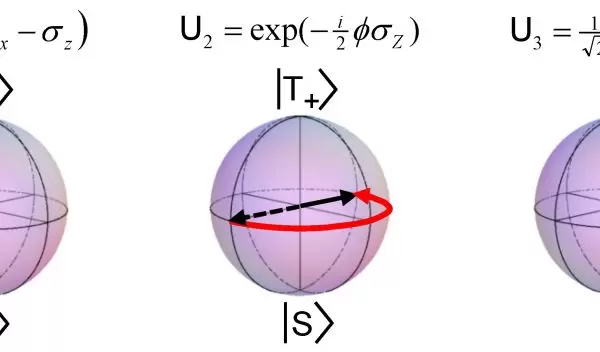
Breakthrough in Electron Spin Control Brings Quantum Computers Closer to Reality
Researchers from two National Science Foundation (NSF)-funded Materials Research Science and Engineering Centers at Princeton University and the University of California, Santa Barbara made a significant breakthrough in the worldwide pursuit of quantum computing. They engineered a method to control the spin of a single electron within a magnetic field without disturbing other nearby electrons.
The method developed by a team of researchers led by Jason Petta, assistant professor of physics at Princeton University with partial support from his NSF Faculty Early Career Development Award, traps one or two electrons in microscopic corrals created by applying voltages to minuscule electrodes giving them an ability to control spin orientation.
The accomplishment overcomes a major challenge to creating scalable semiconductor-based quantum computers that use the intrinsic spin of individual electrons to store and manipulate information. Previous methods, namely electron spin resonance or ESR, unselectively sprayed microwave radiation on a sample, causing all the electrons in the sample to adopt the same spin orientation. This defeated the goal of having distinct electrons work together to represent data.
In their latest research, Petta and his team control electron spin using a method similar to splitting a beam of light. The path length of one of the resulting two beams is carefully adjusted so that when they recombine, their peaks and troughs either reinforce or cancel out each other. By doing this, researchers can control the constructive or destructive outcome of the resultant beam after recombination. Likewise, by carefully adjusting how the peaks and troughs of two quantum spin waves align, Petta's team is able to constructively or destructively manage the condition of an electron's spin and control its orientation.
What's more, the new method controls the spin of electrons in approximately one-billionth of a second. "This is nearly 100 times faster than conventional electron spin resonance," said Petta.
The spin of an electron forms a quantum bit, also called a qubit. Qubits are to quantum computing what "bits" are to conventional computing--a basic unit of information representing either a 1 or 0. But in quantum computing, a qubit can represent 1 and 0 at the same time making way for a dramatic increase in computing speed for certain types of computation.
Researchers ultimately would like to have a quantum computer consisting of many densely packed single electron spins. But in order to make this new type of computer a reality, they would need to control the spin orientation of a selected qubit without disturbing the other nearby spin qubits.
The challenge has been achieving the fast single spin rotations that are required to control a spin qubit without allowing the system to suffer "decoherence" or loss of quantum mechanical behavior.
"Think of a spinning top," said Petta. "Sooner or later it falls down due to friction. Our quantum system in some sense does the same thing. In order for a qubit to be technologically relevant, we need to be able to manipulate its state many times before it loses its quantum coherence."
Regarding future research, Petta explained that "the next big step for the spin qubit community is to coherently couple two spin qubits, implementing what is called a "two-qubit gate." Our work demonstrates single qubit control. In the long run, it is necessary to couple adjacent qubits and have them interact."
Researchers anticipate that quantum computers would enable a range of new possibilities from greatly improved quantum sensors that could impact mineral exploration to improved medical imaging and perhaps even a revolutionary computational paradigm that could lead to the creation of computing devices capable of efficiently solving problems that can not be solved using conventional computer systems.
Professors Art Gossard and postdoctoral fellow Hong Lu with the Materials Research Laboratory at the University of California at Santa Barbara also assisted with this research.
The researchers reported their findings in the journal Science.


